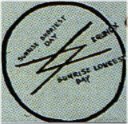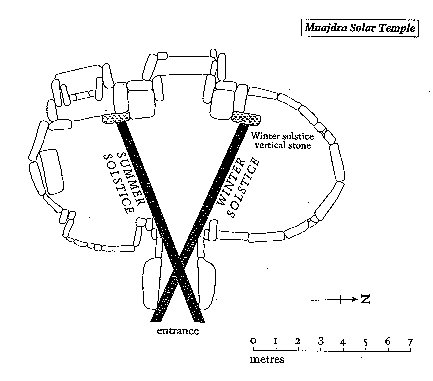|
We recognize
Aa3-6--15 because these glyphs have been studied earlier (cfr
manu kake):
 |
 |
 |
 |
 |
|
Aa3-6 |
Aa3-7 |
Aa3-8 |
Aa3-9 (184) |
Aa3-10 |
 |
 |
 |
 |
 |
|
Aa3-11 |
Aa3-12 |
Aa3-13 |
Aa3-14 |
Aa3-15 (190) |
A manu kake
glyph occupies a position of Janus, it stands on the boundary
between the old and the new. The added little rhomb at top center in
Aa3-10 is presumably the same as in the middle of the preceding
hahe glyph.
If counting should
begin with Ab1-1, then hahe in Aa3-9 acquires another
relevant number:
|
side b |
side a |
|
117 |
 |
271 |
 |
274 |
183 |
 |
486 |
|
Ab2-36 (118) |
Ab5-66
(390) |
Aa3-9 (848) |
|
848 = 16 *
53 |
53 is a number
which we recognize from e.g. the G text, where 2 * 53 measures the
distance from 365 to 471:
...
53 is one more than 52 (weeks in a year) and therefore corresponds
to 29 (one more than 28 shining moon nights in a month) ... 265 = 5 * 53, and 53
is a number similar to 29 (the dark night of the month). 52 * 7 =
364 and 53 * 7 = 371 = 471 - 100 ...
The latter
statement (cfr at henua) referred to the measure 265 from one
takaure glyph to the next:
 |
67 |
 |
111 |
 |
 |
82 |
 |
 |
|
Gb3-1 (292) |
Gb5-6 |
Gb8-30 |
Ga1-1 |
Ga4-1 |
Ga4-2 |
|
180 |
85 |
|
265 = 5 * 53 |
With manu kake
immediately to the right of hahe in Aa3-9 it is not
strange to find number 53 associated with this hahe glyph.
The Tahua
text possibly contains two major parts, one with 16 * 53 = 848
glyphs and one with 6 * 81 = 486 glyphs. 1334 = 6 * 81 + 16 * 53.
848 can be read as
84 and 8, in which case we can multiply 84 * 8 = 672 = 14 * 48. Or
we can read 8 and 48, which gives 8 * 48 = 384. The difference is 6
* 48 = 288, which number we recognize:
|














